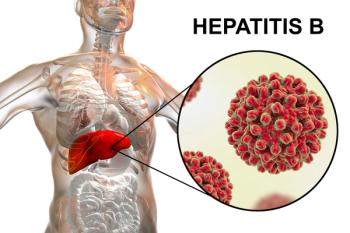
New programs help improve stroke care in hospitals
JCAHO, AHA offer new help to hospitals to improve stroke care.
Most people experiencing heart attack symptoms call 911 immediately in order to be taken to the hospital for the best care possible. To help patients determine which hospitals provide good stroke care, new measures are now available from the American Stroke Association (ASA) and the Joint Commission on Accreditation of Healthcare Organizations (JCAHO).
Stroke is caused by an interruption of blood flow to the brain due to a clogged blood vessel or bleeding from a ruptured blood vessel. Despite considerable advances in stroke prevention and treatment, it remains a leading cause of death and long-term disabilities in America. According to ASA, most patients do not recognize the warning signs of stroke and many hospitals do not have the required infrastructure to rapidly and efficiently treat stroke patients. ASA also estimates that less than 5% of acute stroke patients nationally receive tissue plasminogen activator (tPA), a thrombolytic agent that must be administered within three hours of symptom onset.
In an effort to improve the quality of stroke care provided by hospitals, ASA has developed the following programs: the Acute Stroke Treatment Program (ASTP), Get With the Guidelines-Stroke (GWTG-Stroke), and Primary Stroke Center Certification. The ASTP program has been implemented in hospitals nationwide since 2002; the GWTG-Stroke program is in pilot status, scheduled to be available in the spring of 2004.
The first program, ASTP, complements the Brain Attack Coalition (BAC) members' recommendations for the establishment of primary stroke centers (published in the June 21, 2000, issue of JAMA). While the members of BAC created the guidelines, ASTP provides a step-by-step tool kit for hospital-based healthcare workers to implement those guidelines.
Vital initiatives for improving stroke care have been implemented in a number of hospitals nationwide. The Keystone Center for Patient Safety & Quality, a division of the Michigan Health & Hospital Association Health Foundation, has partnered with ASA to improve stroke prevention and treatment in its community. "It takes one or two dedicated individuals to begin the process improvement. You can start with community education on the warning signs of stroke or ensuring that stroke patients receive prompt prehospital care by emergency medical services and rapidly triaging the patients in the ED," said Chris Goeschel, RN, MPA, executive director of the Keystone Center in Lansing, Mich. ASA stresses the importance of teaching patients the warning signs because many wait for symptoms to resolve and miss the narrow window of opportunity for reversing ischemia with tPA administration.
Authors of a study published in JAMA in 2000 reported that in the Cleveland area only 1.8% of ischemic stroke patients received tPA. These low rates have been attributed to patient presentation beyond the three-hour treatment window and clinicians' concerns about medication-related errors and bleeding complications.
The GWTG-Stroke program provides tools to help healthcare professionals increase adherence to nationally accepted guidelines for managing all phases of stroke. The program works by identifying individuals, or champions, to lead and mobilize teams that implement treatment and discharge protocols for stroke patients. ASA encourages acute stroke teams, at a minimum, to encompass a physician experienced in treating patients with cerebrovascular disease and another healthcare provider.
"A multidisciplinary effort among healthcare providers is essential to optimizing stroke care in hospitals. Pharmacists can have a crucial role by working with other stroke team members to develop treatment protocols and start appropriate therapy in selected patients in a safe and timely manner," said neurologist, Taimur Zaman, M.D., speaking about the Stroke Center program at his institution, UMDNJ-University Hospital, Newark, N.J. Written care protocols for the use of tPA in acute ischemic stroke have proved a key step in reducing drug-related complications and errors in several research papers as well, including American Heart Association's Scientific Statement paper on Medication Errors in Acute Cardiac Care that was published in Circulation in 2002.
Working with ASA, JCAHO has developed Primary Stroke Center Certification, the first nationwide certification program to evaluate stroke care provided by hospitals. JCAHO awards certification to Primary Stroke Centers that successfully demonstrate compliance with program requirements and consensus-based national guidelines. JCAHO believes institutions attaining certification will have achieved unbiased validation of their program's high performance standards and demonstrated a continuum-based approach to stroke management.
"We have recommended an initial set of candidate standardized measures addressing key aspects of stroke care," said Susan Winkler, Pharm.D., BCPS, a member of JCAHO's Disease-Specific Care Stroke Performance Advisory Panel and a pharmacist at University of Illinois Medical Center at Chicago. The advisory panel recommends that all ischemic stroke patients who present at the hospital with symptom onset of three hours or less should be considered to receive tPA. In addition, ischemic stroke patients who are nonambulatory should receive deep vein thrombosis (DVT) prophylaxis during hospitalization.
"Many opportunities are available to hospital pharmacists for improving stroke management. Pharmacists should counsel ischemic stroke patients on risk factor modifications, such as smoking cessation and blood pressure control. We can also make sure that stroke patients receive appropriate pharmacotherapy and education prior to hospital discharge," Winkler added. To date, five organizations have been certified and 11 more are seeking this recognition. These collaborative initiatives from ASA and JCAHO may help clinicians standardize the care provided to stroke patients.
For more information about the ASA programs, visit http://www.strokeassociation.org/ . For more information about JCAHO's Primary Stroke Center Certification, visit http://www.jcaho.org/.
Newsletter
Pharmacy practice is always changing. Stay ahead of the curve with the Drug Topics newsletter and get the latest drug information, industry trends, and patient care tips.











































































































































































































